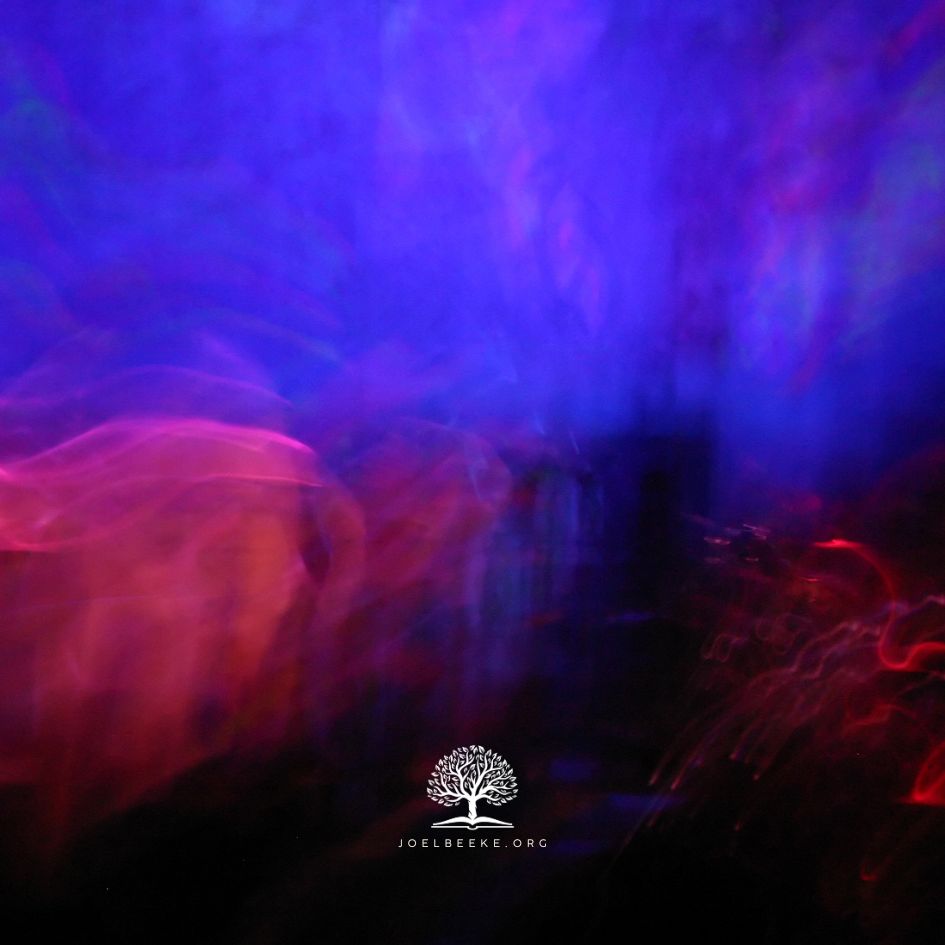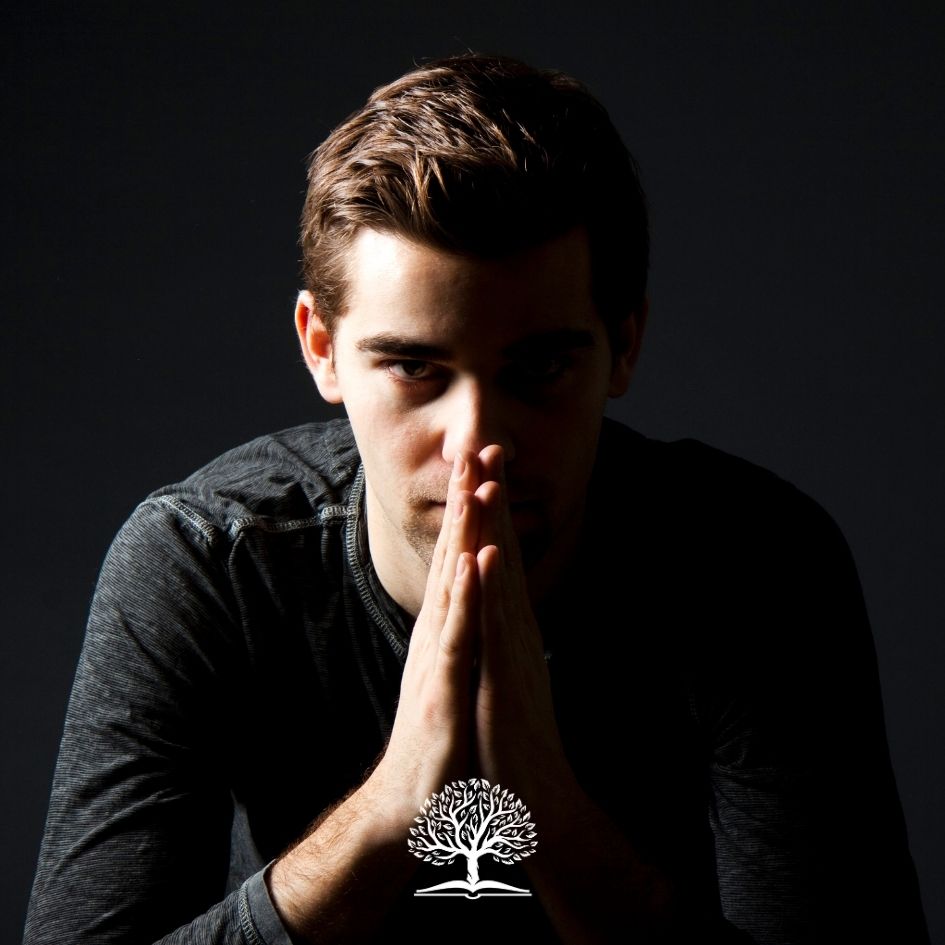
There is a remarkable difference between how an unbeliever and a believer look at dying, death, and the afterlife. For the unbeliever or the agnostic, death is mysterious and the afterlife is even more dubious. For the believer, death is not an extinction or a terminus but only a transition, a junction. Though solemn, it is demystified in Christ and the afterlife is the best life. Let’s consider this contrast.
After Death—Agnosticism’s Version
Sally, the hospice nurse, stood by Bruno’s bedside.1 Bruno was a prisoner with amyotrophic lateral sclerosis (ALS), who had been transferred to the hospital with his fifth bout of pneumonia in the past six months.2 He was serving a life sentence for the murder of his elderly neighbor, who had attempted to stop him from stealing his narcotic pain medications. While incarcerated, he developed ALS, underwent a tracheotomy, and became dependent on a ventilator to breathe.3 Bruno had a choice: return to prison on the ventilator until suffering the next bout of pneumonia with the possibility of dying by suffocation; or, have the ventilator withdrawn, receiving medications to manage his respiratory distress, and dying in the luxury of a hospice facility. Needless to say, Bruno, who thought he was the victim of injustice, did not like his choices.
As he lay silent with expressive eyes, paralyzed, his right wrist handcuffed to the bedrail, and a prison guard by his side, Sally presented her case for hospice care: “Bruno, I know this is a difficult choice to make, but we will keep you comfortable after the ventilator is removed. You won’t have to go back to prison—you won’t suffer anymore.”
Sally was presenting the common view that what happens after death is in some way better than persisting in this present state, even for unrepentant murderers who see themselves as victims of the system. In Europe and America, it is quite acceptable to choose or create a self-customized hereafter. If one wants to believe in nirvana, reincarnation, a happy hunting ground, heaven, any combination of these possibilities, or else simple annihilation, the modernist will not object—provided the belief is not imposed on others. According to the modern mindset, no one really knows what happens after death. “What is emphatically clear is that everyone is dying, and one day, we will all die,” says the modernist, “so why not permit the imagination to wander when it comes to the hereafter?”
For many centuries the church was the predominant institution addressing dying, death, and what happens after death, not hospices and medical institutions that could be indifferent to or at odds with traditional Christianity. Following the beginning of the scientific age in the seventeenth century, the medicalization of death in the nineteenth century, and the increasing effectiveness of medical science in the decades that followed, the church was pushed aside. A paradigm shift occurred. The church is now on the periphery and modern medicine has shifted to the center. Moving into the twentieth century, many hospitals in the West, once Christian institutions in purpose, ethics, and practice, have become Christian in name only. Influenced by the rise of higher criticism, liberal theology, and the social gospel, these hospitals no longer affirm a supernatural-natural Christ-centered worldview grounded in Holy Scripture. In the twenty-first century, modern medicine is eager to fill the void left by the traditional, confessional, and biblical church.
Since the two absolutes of dying and death have become medicalized—that is, as aspects of human experience to be addressed by doctors and nurses rather than by ministers of the Word or one’s fellow Christians—it is not surprising to see healthcare professionals, like Sally, asserting an unqualified view of what happens after death to provide answers, comfort, and hope. This position is commonly referred to as agnosticism, which is derived from the Greek agnosis meaning “a state of unknowing,” that is, with respect to metaphysical questions such as the existence of God or an afterlife. Thus, an agnostic claims not to know matters beyond his or her ability to observe or quantify them. This approach to empirical or scientific facts has the appearance of humility. As a philosophical system, however, agnosticism is a proud and unconditional assertion in which all that can be known with certainty must be measured, tested, demonstrated, and verified by hands-on experience. Agnosticism is an outright rejection of non-empirical truth, which claims, without empirical validation, the impossibility of knowing truth outside the process of scientific investigation!
Two major issues stand behind agnosticism in the contemporary West: pluralism and the eventual failure of medical science to sustain life. In western democracies, citizens have a right to believe what they choose, so long as they do not act on their beliefs in violation of civil law and they tolerate other people’s beliefs. All of these personal views address the hereafter in some way, so agnosticism provides a vehicle for tolerance and affirmation.
Another primary factor already alluded to is the innate human need for answers, comfort, and hope. Dying and death are absolute—we are dying, and one day we will cease to be as we are now. This is mysterious, uncomfortable, and even dreadful. Someday medical science will fail us, when the doctor says he can do no more for us. After all the optimistic counsel from well-meaning healthcare professionals and hopeful state-of-the-art medical treatments, dying and death stand firm and fixed on our human agendas—then what? In modern medical practice a referral to hospice is made, and end-of-life experts come alongside to support individualized answers, provide comfort in the midst of suffering, and affirm one’s self-customized hopes for some good or life after death.
Death as a Natural Part of Life
In a similar way, modern medicine commonly promotes the view that death is a natural and normal part of human existence. Since dying is a process running parallel with life, in modern medicine the death of the body has become associated with the outworking of natural laws of life. In medical literature, one will often find dying and death associated with pregnancy and birth, or as a stage in a natural process, much like a caterpillar emerging from a cocoon as a butterfly. This interpretation is rooted in the rise of evolutionary biology in the late nineteenth century. According to this viewpoint, no line exists between dying and the death of the body, because they are both the outworking of natural laws of survival occurring in the larger cycle of life. Thus, people facing death should accept and even welcome death with optimism as a transition to a self-customized hereafter.
These naturalistic and evolutionary theories have also prevailed in modern medicine to define death. To determine the moment when life ceases and death occurs, doctors today speak of “brain death,” the point at which, in the judgment of the attending physician, “worthwhile activity” ceases in the three pounds of biochemical tissue in the skull. According to modern medicine’s definition of death, an individual may have a beating heart, a level of integrative function between the brain and body, and the continuation of cellular processes in the body indicating life, but the person may still be pronounced dead. The residual signs of life are interpreted as mere operations of the laws of nature that will not sustain the ongoing survival of a human person as a whole. Contrary to popular belief, biblically informed medical science has proven that we are more than biochemical substances bent on survival; dying and death are not natural and normal parts of life; there is in fact a distinct line separating dying from living, and even the death of the body from its life.
Dying and the Death of the Body—the Facts
We may learn a true view of physical death by studying the word of God. Although the Holy Scriptures are not a book of science, they do provide a basic framework to understand life and death—a framework within which we can accurately view the findings of science. The Bible teaches us that human life is a creation and gift of God: “And the Lord God formed man of the dust of the ground, and breathed into his nostrils the breath of life; and man became a living soul” (Gen. 2:7). An essential element of our life is “breath,” a quality that man shares with the animals (Gen. 7:21–22). The Bible also closely associates “blood” with life, going so far as to say that the life of a man or beast is in the blood (Gen. 9:4–5; Lev. 17:11, 14; Deut. 12:23). Consequently, “blood” can represent violence and death (Gen. 4:10–11). Death itself is God’s judgment upon sin (Gen. 2:17), a doctrine to which we will return in a later chapter. God pronounced that judgment in these words: “In the sweat of thy face shalt thou eat bread, till thou return unto the ground; for out of it wast thou taken: for dust thou art, and unto dust shalt thou return” (Gen. 3:19). Therefore, life is found in the breath and blood of the body, and death is marked by the decomposition of the body into the earth from which God formed it.
Medical science also identifies the physical death of a human being with the end of cardiopulmonary activity (breath and blood) and the onset of decomposition (to dust). These set an observable boundary dividing the state of physical life from the state of death. When the heart, lungs, and circulatory system cease to distribute oxygen throughout the body, there is a change from aerobic (oxygen-fueled) action in the body to anaerobic (non-oxygen fueled) activity, which is referred to as corruption or decomposition. During decomposition, autolysis or self-digestion starts. As the temperature of the body continues to decrease, rigor mortis (stiffness of limbs) sets in. About four days later, putrefaction begins. It is interesting to note that Jesus lay in the grave for three days without corruption (Ps. 16:10; Acts 2:27) and Lazarus for four with suspected putrefaction (John 11:39). During putrefaction, foul-smelling methane, hydrogen sulfide, and ammonia fumes are released from rotting tissues, the body liquefies, and eventually the entire body dissolves or disintegrates—“unto dust shalt thou return” (Gen. 3:19). The death of the human body, then, is not merely the death of certain cells in it. On a microscopic level, cells are constantly dying in our bodies. Nor is it the death of an organ in the body. Medically speaking, death comes from the systemic disruption of cardiopulmonary activity such that oxygen-based life processes are replaced by a process of decay into earth.
Since the 1980s it has become common to certify a person’s death by the end of measurable brain activity, a condition commonly referred to as “brain death.” As noted above, both the Bible and a basic scientific understanding of death focus on the end of breathing, but the invention of the ventilator blurred this definition. Thus, it is possible for a nonresponsive person to have no detectable brain activity and for the air-pumping machine to aerate the lungs. This mechanical process provides the heart with oxygen-rich blood to keep it beating, which in turn circulates the blood throughout the body. While the heart can initiate an impulse to beat without the brain, the lungs require a stimulus from the brain, more specifically the brain-stem, in order for them to function. The ventilator bypasses this physiological process, and rather than just removing the non-responsive person from the life-sustaining apparatus to see if breathing stops, and soon after the beating heart, the medical community has adopted brain-death criteria to certify death. This legal move enables the procurement of healthy organs from “brain-dead” donors.4 At least two serious matters may be raised about defining death in such a manner.
First, “brain death” is often ambiguous and poorly defined. To what extent must the brain be inactive for it to be considered “dead”? Aside from the beating heart, it is necessary to point out that a level of activity still occurs between parts of the brain and body, which indicates the brain is not truly dead according to brain-death criteria which in the United States is “irreversible cessation of all parts of the brain” (italics ours). It is well documented that when a surgeon cuts into a “brain-dead” organ donor, heart rate and blood pressure increase, which indicates a physiological interaction between the brain and organs in the body. This is a common stress response on the heart occurring along the hypothalamic, pituitary, and adrenal axis (HPA axis). The hypothalamus is a region in the brain, the pituitary gland is a structure at the base of the brain, and the adrenal glands are on the top of the kidneys in the body; and this physiological pathway modulates heart rate and blood pressure. “Brain-death” can be a dangerous definition of death insofar as it can prove expedient to justify acts that terminate a still-living human body, perhaps to harvest its organs.
Second, those who believe that human life begins at the cellular level contradict themselves if they define life by brain activity. One cannot be consistent in believing that life begins at conception (i.e., the time when a male sperm penetrates a female’s egg and a separate human life starts at the cellular level) and accept brain death as a valid definition of death since the nervous system and brain do not develop until five to six weeks after conception. If one sees brain-death as a valid definition of death, then why not permit abortion at least until the latter half of the first trimester of pregnancy? This is not merely a human being “in potential,” but, according to Holy Scripture, he or she is a unique developing person with a God-breathed, life-giving spirit animating a distinct cellular structure in a woman’s womb (cf. Gen. 2:7; Ps. 139:13–16; Luke 1:13, 30–36, 41–44).
Biblical Conclusions
Biblically informed medical science proves the death of the body is not a natural aspect of life or a necessary concomitant to it and brain death can be a dangerous way to define the boundary between life and death. Agnosticism about what happens after physical death is indefensible, for Holy Scripture is emphatically clear: “For we must all appear before the judgment seat of Christ; that every one may receive the things done in his body, according to that he hath done, whether it be good or bad. Knowing therefore the terror of the Lord, we persuade men” (2 Cor. 5:10–11). “Knowing therefore…we persuade men” (italics ours). What is known? The “fear of the Lord” as the Judge of the whole human race! All will “appear,” body and soul, “before the judgment seat of Christ” to account for every thought, word, and deed done while living.
Finally, contrary to the false hopes encouraged by agnostic modern thought and modern medicine, the death of the body is only the beginning of sorrows for those who have been so foolish as to live apart from God and continue in sin. After death there is a day of judgment slated on the calendar of God; all must appear before His tribunal, and none shall be spared (2 Cor. 5:10). Death is an enemy, but Christ overcame death by His own resurrection from death, and has robbed death of its sting or power to hurt those who belong to Christ (1 Cor. 15:54–57). Ultimately, He will destroy death itself, raising the dead from their graves and summoning all human beings to appear before His judgment seat. Those who in this life were joined to Him by a true faith will be acknowledged by Him and received into the glory and life of heaven. Those who hardened their hearts and went on in their sins will be condemned by Him and cast out into the horrible darkness and everlasting burnings of hell. Such is the future of the human race according to the plan of God revealed in His word.
While agnostics claim that what may follow death is mysterious and nothing can be known about it for certain, those who receive the Holy Scriptures as the true and trustworthy account of the will of God for our salvation, have a sure and certain knowledge about these things. Thus, the Scriptures expose and refute the errors of agnosticism and modern medicine, demystifying their view of death, and giving hope to those who trust in Christ alone for the victory over death that their Savior grants.
Excerpt from
Dying and Death: Getting Rightly Prepared for the Inevitable
by Joel R. Beeke and Christopher W. Bogosh








